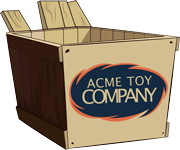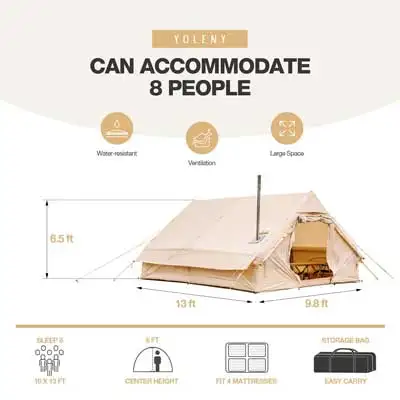The history of inflatable tent houses
Throughout the annals of human civilization, the concept of shelter has always occupied a central role in our lives. From the humble beginnings of primitive caves to the elaborate architectural marvels of today, the evolution of human dwellings has been a testament to our ingenuity and adaptability. In this regard, inflatable tent houses represent an intriguing chapter in this ongoing narrative.
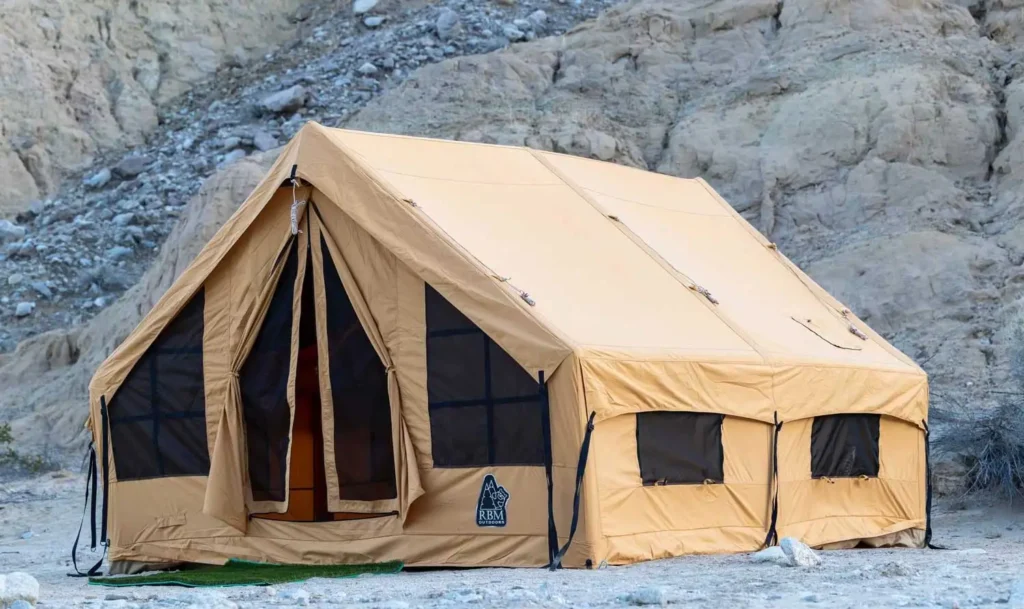
Acme Toy Company has found this can be traced back to ancient times when nomadic tribes roamed vast landscapes in search of sustenance and shelter. These resourceful communities relied on animal hides and natural materials to construct temporary structures that could be easily assembled and transported.
This nomadic lifestyle required dwellings that were lightweight, durable, and capable of withstanding various weather conditions. The advent of inflatable technology proved to be a pivotal turning point in their quest for improved mobility and versatility.
While ancient civilizations experimented with rudimentary methods such as animal bladder membranes filled with air, it was not until the late 18th century that more substantial advancements took place. In 1783, French inventors Joseph-Michel Montgolfier and Jacques-Étienne Montgolfier pioneered hot-air ballooning by utilizing inflated fabric envelopes to carry passengers into the skies for the first time in history.
This groundbreaking achievement captured public fascination and aroused interest in the potential applications of inflatable structures beyond mere transportation. However, it wasn’t until several decades later during World War II that inflatable technology truly found its stride as a practical solution for temporary housing needs.
Inflatable tents were developed as portable field hospitals and barracks by various military forces around the world. These innovative shelters provided quick assembly times while still offering protection from environmental elements on battlefronts or during humanitarian missions.
The subsequent decades witnessed a remarkable surge in innovation within the realm of inflatable tent houses. Technological advancements allowed for lighter yet more robust fabrics, efficient air pumps, sophisticated sealing techniques, and customizable designs catering to diverse purposes – ranging from recreational camping to emergency relief efforts.
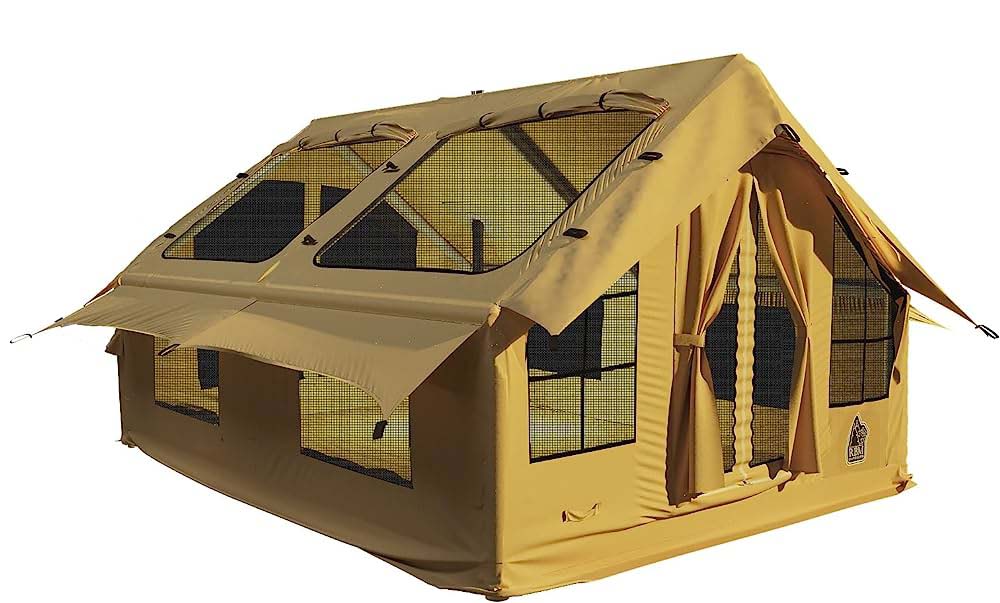
Inflatable tent houses have become a symbol of modern-day versatility, embodying the fusion of functionality and convenience that our fast-paced world demands. Today, inflatable tent houses continue to captivate adventurers, outdoor enthusiasts, and even regular individuals seeking unconventional living experiences.
As we delve deeper into the nuances of different types of inflatable tent houses and explore their myriad benefits and drawbacks, it becomes evident that these inflatable marvels have roots that stretch far beyond their contemporary allure. They stand as a testament to the ingenuity of our ancestors and serve as a testament to human adaptability in our quest for comfortable shelter amidst ever-changing environments.
The different types of inflatable tent houses
When it comes to inflatable tent houses, there is a wide variety of options available on the market. Each type offers unique features and benefits, catering to different preferences and needs. In this section, we will explore some of the most popular types of inflatable tent houses.
1. Dome Tents:
Dome-shaped inflatable tents are one of the most common types you’ll come across. These tents feature a curved design that allows for excellent stability and wind resistance.
The shape also maximizes the interior space, making them ideal for families or groups seeking ample room while camping or at outdoor events.
2. Tunnel Tents:
Tunnel-style inflatable tent houses are another popular choice among outdoor enthusiasts.
As the name suggests, these tents consist of multiple interconnected tubes forming a tunnel-like structure. This design provides exceptional stability and durability, making it suitable for extended camping trips in various weather conditions.
Additionally, tunnel tents often have separate sleeping areas, allowing for privacy and convenience.
3. Geodesic Tents:
Geodesic inflatable tent houses are renowned for their exceptional strength and stability due to their interconnected pole structure built in triangular patterns.
This design enables them to withstand harsh weather conditions like high winds and heavy snowfall with ease. Geodesic tents often come with multiple entrances and windows, ensuring excellent ventilation while maintaining comfort.
4. Cube Tents:
If you’re looking for a versatile option that combines functionality with an aesthetic appeal, cube-shaped inflatable tent houses might be your best bet. These tents offer excellent headroom throughout the entire space, making them feel more spacious than other designs of similar size.
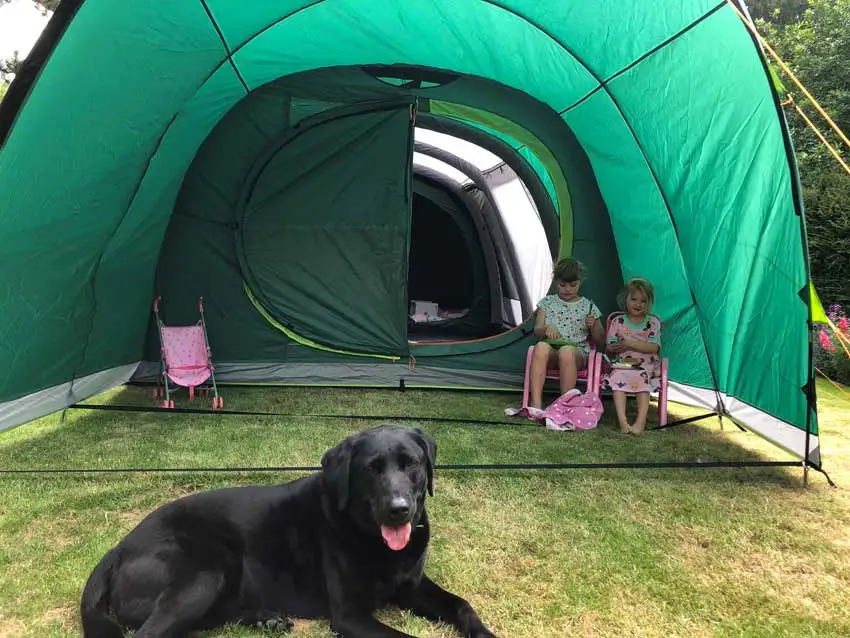
Furthermore, cube tents often allow for easy customization by adding dividers or creating separate rooms within the main living area.
5. Inflatable Pods:
For those looking for a more unconventional camping experience or seeking privacy in crowded campgrounds or festivals, inflatable pods offer a unique solution worth considering.
These individual pods provide cozy shelter while offering sufficient space for a single occupant or a couple. Inflatable pods are compact, lightweight, and easy to set up, making them ideal for backpackers or solo travelers seeking convenience and simplicity.
Remember, this is just a selection of the different types of inflatable tent houses available. Each type has its own advantages and disadvantages, so it’s essential to consider your specific needs and preferences when choosing the right one for your outdoor adventures.
The benefits of inflatable tent houses
Inflatable tent houses offer a plethora of benefits that make them a fantastic choice for outdoor enthusiasts seeking comfort, convenience, and versatility. One of the key advantages of inflatable tent houses is their exceptional portability.
Unlike traditional tents that can be bulky and cumbersome to transport, inflatable tent houses are designed to be lightweight and compact when deflated, making them easy to carry in a backpack or store in the trunk of a car. This feature makes them perfect for hikers, campers, and adventurers who frequently move from one location to another.
Furthermore, inflatable tent houses boast rapid and effortless setup. With their innovative air-filled structures, they eliminate the need for frustrating pole assembly or complicated pitching techniques.
Inflatable tent houses typically come equipped with built-in air pumps or can be easily inflated using manual or electric pumps. Within minutes, your temporary abode will stand tall amidst nature’s grandeur.
This swift installation process not only saves time but also reduces physical exertion, allowing you to focus on enjoying your outdoor experience without unnecessary hassle. The durability of inflatable tent houses is another notable advantage they offer over traditional tents.
Constructed with robust materials such as reinforced PVC or high-density fabrics, these structures are built to withstand harsh weather conditions ranging from heavy rainstorms to strong winds. They are designed with sturdy construction techniques and often feature multiple air chambers which provide excellent stability even in turbulent environments.
Additionally, these materials are often treated with waterproof coatings that enhance their resistance against moisture infiltration while providing adequate ventilation for optimal comfort. Inflatable tent houses also excel in providing superior insulation compared to their conventional counterparts.
Thanks to the insulating properties of air-filled chambers within the structure’s walls and floors combined with specially engineered fabrics used in their construction, these tents effectively maintain a comfortable internal temperature regardless of external weather conditions. Whether you find yourself camping during chilly nights or braving scorching summer heatwaves, an inflatable tent house offers reliable protection and insulation to ensure a cozy and pleasant retreat within the great outdoors.
Inflatable tent houses are renowned for their versatility. These tents come in various sizes and designs, accommodating solo travelers, couples, or even larger groups with multiple rooms.
Some models feature detachable compartments or partitions that can be customized to suit your needs. The flexibility they provide allows for adaptability in different camping scenarios, whether you prefer a spacious layout for a family vacation or a compact design for solo expeditions.
Moreover, inflatable tent houses are not limited to camping; they can also be used at festivals, beach outings, backyard gatherings, or any other outdoor event that requires reliable shelter. The benefits of inflatable tent houses make them an exceptional choice for outdoor enthusiasts seeking comfort and convenience without compromising on durability or versatility.
The portability, rapid setup process, durability against adverse weather conditions, superior insulation properties, and overall adaptability make these tents an attractive option for anyone looking to immerse themselves in nature while enjoying the comforts of home. Whether you’re embarking on a solo adventure or planning a group getaway amidst the wilderness, an inflatable tent house is sure to elevate your outdoor experience to new heights.
The drawbacks of inflatable tent houses
One must acknowledge that, despite their many advantages, inflatable tent houses are not without their drawbacks. It is imperative to consider these aspects before investing in one, to ensure that it aligns with your expectations and requirements.
Firstly, one of the primary concerns surrounding inflatable tent houses is their vulnerability to punctures and leaks. Unlike traditional tents made of sturdy materials such as canvas or nylon, inflatable tents are constructed using lightweight materials like PVC or TPU.
While this makes them highly portable and easy to set up, it also renders them more susceptible to damage from sharp objects or rough terrains. A stray rock or thorny bush could potentially puncture the fabric, compromising the integrity of the structure and leaving you exposed to external elements.
Although most inflatable tent houses come with repair kits for minor damages, larger tears may require professional assistance or replacement parts. Secondly, due to their inflatable nature, these tents generally take longer to set up compared to traditional ones.
While inflating an average-sized inflatable tent house may only take a few minutes using an electric pump or manual foot pump, the process can still be time-consuming when compared to erecting a regular tent with pre-attached poles. Additionally, they often require a flat surface for optimal stability and functioning.
Finding an appropriate area devoid of rocks or uneven terrain can be challenging in certain camping locations – especially in rugged environments where such conditions are prevalent. Another important aspect worth considering is the overall durability of inflatable tent houses when exposed to extreme weather conditions.
Although most modern models boast impressive resistance against wind and rain due to their sturdy designs and reinforced seams, they may not fare as well during heavy snowfall or prolonged exposure to intense sunlight. High winds can exert considerable force on these structures since they lack a rigid frame system like conventional tents do.
While there are undoubtedly some drawbacks associated with inflatable tent houses—such as susceptibility to punctures and leaks—their benefits often outweigh these concerns. It is crucial to take proper precautions, such as avoiding sharp objects and selecting suitable camping locations, to mitigate these potential issues.
Additionally, choosing a reputable brand known for its durable materials and weather-resistant features can significantly enhance the lifespan and performance of an inflatable tent house. By keeping these drawbacks in mind and making informed decisions, you can ensure a safe, enjoyable camping experience with an inflatable tent house that suits your needs.
How to choose the right inflatable tent house for your needs
When selecting the ideal inflatable tent house for your needs, several factors must be considered to ensure a comfortable and enjoyable camping experience. First and foremost, it is essential to assess the size requirements of your group. Consider the number of occupants who will be using the tent house, along with any additional space needed for storing camping gear or other belongings.
This will determine the overall dimensions and capacity of the inflatable tent house you should consider. Next, evaluate the weather conditions you are likely to encounter during your camping trips.
If you anticipate camping in areas with strong winds or heavy rainfall, opt for an inflatable tent house that offers excellent stability and waterproofing capabilities. Look for features such as sturdy construction materials, reinforced seams, and a robust frame system that can withstand adverse weather conditions.
Another crucial consideration is ease of setup. Look for an inflatable tent house that offers a quick and straightforward setup process, as this can significantly impact your overall camping experience.
Features such as color-coded poles or air beams, clear instructions, and user-friendly inflation systems can make setting up your tent house hassle-free even for less experienced campers. Additionally, consider the overall durability of the inflatable tent house.
Seek models made from high-quality materials that are resistant to tears and abrasions while being able to withstand repeated use over time. Reinforced corners and double-stitched seams are also indicators of a more durable product that will last for multiple camping seasons.
Take into account any specific features or amenities you desire in an inflatable tent house. Some models may offer extra storage pockets or hooks inside the tent for convenient organization.
Others might provide additional ventilation options or large windows to enhance airflow during hot summer nights. By carefully assessing these factors—size requirements, weather resistance, ease of setup, durability—and considering any desired features or amenities, you can confidently choose an inflatable tent house tailored precisely to meet your specific needs while ensuring a comfortable and memorable camping experience.
(before concluding), remember to also consider your budget when selecting an inflatable tent house. While higher-priced models often offer superior quality and additional features, it is still possible to find affordable options that meet your requirements.
Take the time to compare different brands and models, read reviews from other campers, and prioritize the features that are most important to you. By doing so, you can make an informed decision and invest in an inflatable tent house that will serve you well for many camping adventures to come.
Tips for setting up and using an inflatable tent house
When it comes to setting up and using an inflatable tent house, there are several important tips to keep in mind. Proper setup is crucial for ensuring the stability and functionality of the tent, while proper usage will enhance your overall camping experience.
Here are some detailed tips to help you make the most out of your inflatable tent house: 1. Site selection: Before setting up your inflatable tent house, carefully choose the site where you plan to pitch it.
Look for a level ground free from sharp rocks, branches, or debris that could potentially damage the material. Avoid areas prone to flooding or strong winds as these can compromise the stability of the tent.
It’s also recommended to clear away any sharp objects that may be hidden beneath the surface. 2. Inflation process: Begin by unrolling your inflatable tent house on the chosen area and ensure all zippers and closures are open.
Locate the inflation valve(s), usually located on one side of the tent, and connect your pump according to manufacturer’s instructions. Start inflating gradually, making sure not to overinflate which could strain the seams or cause excessive pressure on certain parts of the structure.
Once fully inflated, check all air chambers for proper firmness. 3. Staking and anchoring: After inflating your tent house, secure it in place by staking it down properly with ground stakes or pegs provided with your tent kit.
Insert these stakes through designated loops or straps around each corner and along any guy lines attached to improve stability during windy conditions. 4. Interior organization: Once set up externally, focus on organizing the interior space of your inflatable tent house efficiently for a comfortable camping experience.
Make use of ample storage pockets or compartments provided within the structure for keeping essentials like flashlight, water bottle, maps handy during nighttime expeditions. 5. Maintenance: Regular maintenance is key to ensuring long-lasting performance from your inflatable tent house.
After each use, make sure it is thoroughly dry and free from any debris or moisture before packing it away. Cleaning the tent with a mild solution of soap and water, followed by proper rinsing, will help to remove dirt or stains.
Avoid using strong detergents, abrasive cleaners, or solvents that may damage the tent’s material. 6. Safety precautions: Finally, prioritize safety while using an inflatable tent house.
Be mindful of any fire hazards and ensure to keep flames or heat sources away from the tent fabric. Educate yourself about emergency procedures in case of sudden changes in weather conditions such as storms or heavy rainfall.
Consider carrying a repair kit specifically designed for inflatable tents, which could prove useful in case of minor damages. By following these tips for setting up and using your inflatable tent house properly, you can enhance your camping experience with added comfort, safety, and peace of mind knowing that your temporary shelter is well-maintained and secure against the elements.
On a Final Note
Inflatable tent houses offer a unique and innovative solution for outdoor enthusiasts seeking comfort and convenience in their camping experience. With their versatile designs, lightweight materials, and easy setup process, these tents have revolutionized the way people enjoy the great outdoors. Throughout this guide, we delved into the rich history of inflatable tent houses and explored the various types available on the market today.
From dome-shaped tents to tunnel-shaped ones, each design caters to different needs and preferences. We also discussed the benefits of these tents, including their durability, weather resistance, and portability.
Additionally, we acknowledged some of the drawbacks such as potential punctures or leaks that users should be aware of. Choosing an inflatable tent house requires careful consideration of factors such as size, capacity, features, and budget.
By following our expert tips on selecting the right tent for your needs, you can ensure a memorable camping experience without compromising on comfort or functionality. We provided practical advice on setting up and using an inflatable tent house effectively to maximize its potential.
In essence, inflatable tent houses have transformed traditional camping into a luxurious affair without sacrificing the authentic outdoor experience. Their innovative designs offer both comfort and convenience while allowing individuals to immerse themselves in nature’s beauty fully.
As you embark on your next adventure with an inflatable tent house by your side, let it be a reminder that with modern technology comes endless possibilities for enjoying nature’s wonders in style and serenity. So go forth with confidence and embrace all that this remarkable invention has to offer – happy camping!
